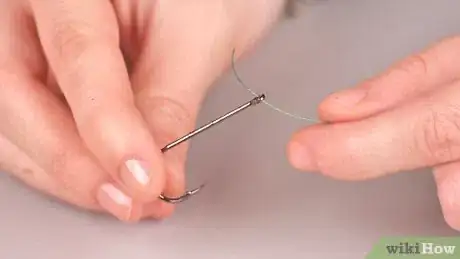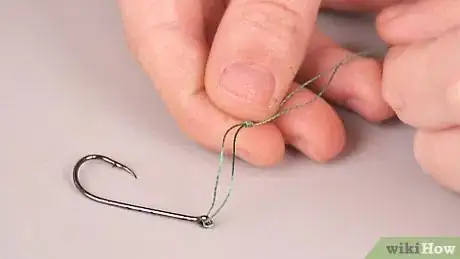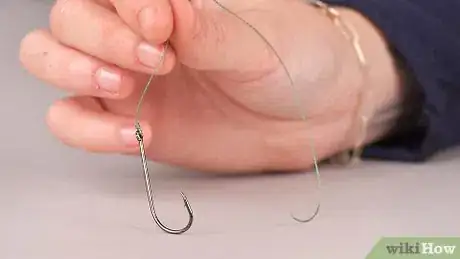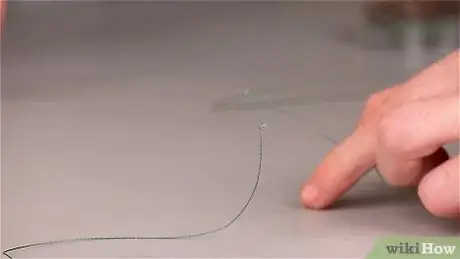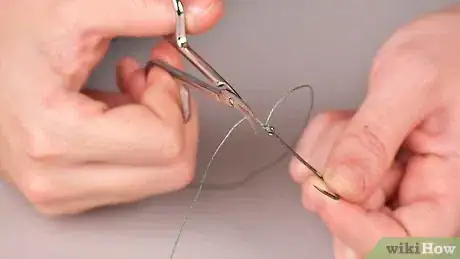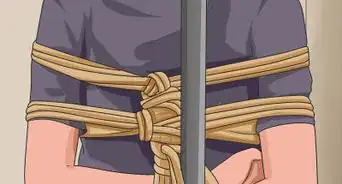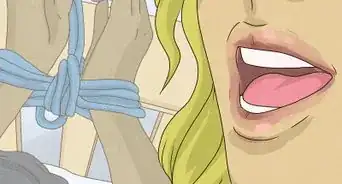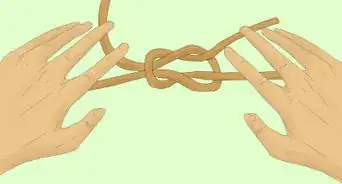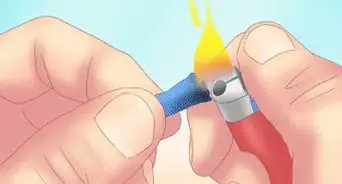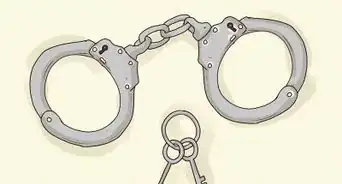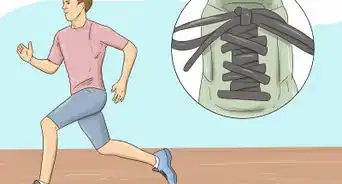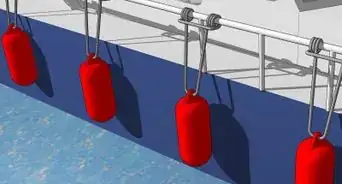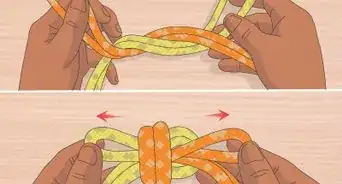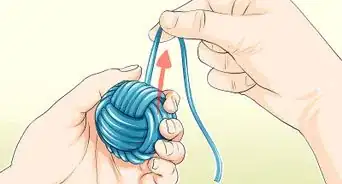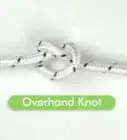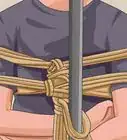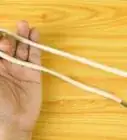This article was co-authored by Kathy Sparrow, MA. Kathy Sparrow is a fly-fishing instructor and adventurer at heart. Kathy is the co-founder and previous manager of the Kingfisher Inn, a fly-fishing lodge on the Lower Laguna Madre in Texas. She is the author of "On the Mother Lagoon: Flyfishing and the Spiritual Journey" and "The Whispered Teachings of Grandmother Trout” a novel conveying the feminine perspective of fly fishing. Kathy is also a Certified Canfield Trainer in Canfield Methodologies. She guides individuals through the process of embracing change by expressing confidence, awareness, and courage through the tools of writing, fly fishing, and intentional conversation. She has a MA in English with an emphasis in Literature and Cultural Studies from the University of Texas-Pan American.
There are 17 references cited in this article, which can be found at the bottom of the page.
This article has been viewed 19,569 times.
When you have a fish on the line ready to reel in, the last thing you want to feel is the line snap and go slack. A well-tied braided line keeps your hook in place, making it more likely that you’ll successfully bring in any fish you snare. Braided lines cast a lot further than mono lines, and they don’t stretch, which makes it easier for your hook to catch in a fish’s mouth. But, braided lines don’t hold knots as well because they’re a little slippery, which is where the modified uni knot and palomar knot come into play—they’re strong knots that can withstand a lot of pressure, and they’re easy to make. Switch out your entire reel for braided line and get your hook in place with one of these knots before going on your next fishing excursion![1]
Steps
Modified Uni Knot
-
1Thread the braided line through the eye of the fishing hook. The shorter end of the line pulled through the eye is called the “tag.” The longer stretch of line connecting to your fishing pole is called the “main” or “standing” line.[2]
- The modified uni knot is great for sea fishing or fly fishing with a braided line. You can also use this knot to secure bobbers and lures.
- Make sure to use the right line for where you'll be fishing—saltwater lines are typically best for more tropical waters, for instance.[3]
-
2Put the tag line through the eye of the hook a second time. Braided lines are slipperier than mono (unbraided) lines. It’s important to add this second pass-through to your process to make the knot as secure as possible.[4]
- The uni knot is super strong and popular among fishers. It maintains about 82% of your line’s strength, which is important when you’re trying to reel in a fish.[5]
Advertisement -
3Pull the tag end, so you have 6 to 8 inches (15 to 20 cm) of length to work with. Position the line so that the tag end and main line are parallel to each other with the tag end laying closest to your body.[6]
- It’s okay if you pull a little extra line through the hook. Anything leftover at the end gets trimmed away.
-
4Fold the tag line in half so the end is pointing toward the hook. Before folding, position the hook and line so that the hook is on your lefthand side and the tag line is closest to your body.[7]
- Check that the tag line and main line are both still to the right of the hook.
-
5Pull the end of the tag line up over the main line to make a loop. Check that the tag line is crossing over itself and the main line. If it helps, lay your hook and line on a table so you can more easily see what you’re doing. Pinch the lines together where the loop intersects, and leave the end of the tag line sticking up, away from your body.
- At this stage, the top of the loop is made of 2 threads. The bottom of the loop is 1 thread.
-
6Wrap the tag line around the top of the loop 8-10 times. Pass the end of the tag line through the inside of the loop. Bring it back up, then pass it through the loop again. Keep repeating this movement until you’ve wrapped it around the braided line a total of 8-10 times.[8]
- A normal uni knot only wraps around 5 times, but since you’re working with a braided line, it’s smart to do it a few additional times for extra strength.
- Check that the wraps are going in one direction and don’t overlap each other.
-
7Pull on both the tag line and main line to tighten the knot. Pinch the tag line and main line together. Start tugging on them to make the big loop get smaller while the wrapped section's small loops get closer and closer together. Keep pulling until you start to feel a lot of resistance.[9]
- Don’t be afraid to put some muscle into it. The line is really strong and can withstand a lot of pressure.
-
8Wet the line when you notice resistance, then continue pulling. Either use saliva or a little bit of water to moisten the section with the small loops wrapped along the line. Doing this lubricates the line a little and helps the knot slip along it more easily so you can secure it as tightly as possible.[10]
- It isn’t possible to make the line too wet, so don’t worry about that!
-
9Pull the main line to move the knot down to the hook. Release the tag line and pull on just the main line. The knot will slip down until it meets the top of the eye of the hook.[11]
- This part of the process is very similar to how you would adjust a slipknot.
-
10Trim the tag end to finish your uni knot. Once the knot is flush with the hook, all that’s left is to trim away the excess line of the tag end. Use a pair of scissors, and be careful not to cut the main line accidentally.[12]
- This modified uni knot can withstand about 19 to 22 pounds (8.6 to 10.0 kg) of pressure.[13]
Palomar Knot
-
1Measure 6 to 8 inches (15 to 20 cm) of braided line and make a fold. Crease the fold to form a nice, sharp point. Keep the line folded so you have 2 parallel threads next to each other.[14]
- “Palomar” is pronounced “PAHL-oh-mahr,” just in case you want to sound like you know your knots when talking with other fishers.[15]
- Folding the line doubles its width and will make your knot even stronger.
-
2Thread the end of the line through the eye of the hook 3 inches (7.6 cm). About half of the doubled-up line should be on either side of the hook. The short working end is called the “tag” line, and the long line is called the “standing” or “main” line.[16]
-
3Tie an overhand knot with the tag line and main line and pull it tight. Lay the tag end over the main line to make a loop, then tuck the end through the loop. Pull the knot tight to secure the braided line to the hook.[17]
- One of the reasons the palomar knot is so popular is because it’s made up of a few simple steps. It’s strong and doesn’t take long to make, making it easy to do even when it’s dark or cold out.
-
4Open the tag end and loop it around the hook. The tag end is made of 2 parallel lines of thread—separate them so you have a circle of braided line to work with. Take that circle and simply pull it over the body of the hook.[18]
- Be careful not to snag your fingers on the hook!
-
5Pull the main line until the loop tightens against the hook. Gently tug on the main line. As you do so, the loop will start getting smaller and smaller, until eventually, it’s just a small knot against the line. Keep pulling until the knot is flush against the eye of the hook.[19]
- If the knot seems stuck, you can lubricate it a little with saliva or water to help it along.[20]
-
6
Expert Q&A
Did you know you can get expert answers for this article?
Unlock expert answers by supporting wikiHow
-
QuestionHow do I know what fishing line to choose?
 Kathy Sparrow, MAKathy Sparrow is a fly-fishing instructor and adventurer at heart. Kathy is the co-founder and previous manager of the Kingfisher Inn, a fly-fishing lodge on the Lower Laguna Madre in Texas. She is the author of "On the Mother Lagoon: Flyfishing and the Spiritual Journey" and "The Whispered Teachings of Grandmother Trout” a novel conveying the feminine perspective of fly fishing. Kathy is also a Certified Canfield Trainer in Canfield Methodologies. She guides individuals through the process of embracing change by expressing confidence, awareness, and courage through the tools of writing, fly fishing, and intentional conversation. She has a MA in English with an emphasis in Literature and Cultural Studies from the University of Texas-Pan American.
Kathy Sparrow, MAKathy Sparrow is a fly-fishing instructor and adventurer at heart. Kathy is the co-founder and previous manager of the Kingfisher Inn, a fly-fishing lodge on the Lower Laguna Madre in Texas. She is the author of "On the Mother Lagoon: Flyfishing and the Spiritual Journey" and "The Whispered Teachings of Grandmother Trout” a novel conveying the feminine perspective of fly fishing. Kathy is also a Certified Canfield Trainer in Canfield Methodologies. She guides individuals through the process of embracing change by expressing confidence, awareness, and courage through the tools of writing, fly fishing, and intentional conversation. She has a MA in English with an emphasis in Literature and Cultural Studies from the University of Texas-Pan American.
Fishing Instructor
Things You’ll Need
Modified Uni Knot
- Braided line
- Fish hook
- Scissors
Palomar Knot
- Braided line
- Fish hook
- Scissors
References
- ↑ https://www.sportfishingmag.com/braid-vs-mono/
- ↑ https://www.saltstrong.com/articles/braid-uni-knot/
- ↑ Kathy Sparrow, MA. Fishing Instructor. Expert Interview. 1 April 2020.
- ↑ https://youtu.be/kxS7fVOkmDo?t=18
- ↑ https://www.animatedknots.com/uni-knot
- ↑ https://youtu.be/kxS7fVOkmDo?t=51
- ↑ https://www.animatedknots.com/uni-knot
- ↑ https://youtu.be/kxS7fVOkmDo?t=89
- ↑ https://youtu.be/kxS7fVOkmDo?t=153
- ↑ https://youtu.be/kxS7fVOkmDo?t=168
- ↑ https://youtu.be/kxS7fVOkmDo?t=187
- ↑ https://www.saltstrong.com/articles/braid-uni-knot/
- ↑ https://www.saltstrong.com/articles/best-fishing-knot-for-braided-line-swivel-hook-lure/
- ↑ https://youtu.be/GmKPozhaqB8?t=7
- ↑ https://www.101knots.com/palomar-knot.html
- ↑ https://www.animatedknots.com/palomar-knot
- ↑ https://www.takemefishing.org/how-to-fish/fishing-knots-and-rigs/how-to-tie-palomar-knots/
- ↑ https://www.takemefishing.org/how-to-fish/fishing-knots-and-rigs/how-to-tie-palomar-knots/
- ↑ https://youtu.be/GmKPozhaqB8?t=69
- ↑ https://www.animatedknots.com/palomar-knot
- ↑ https://youtu.be/GmKPozhaqB8?t=86
- ↑ https://www.101knots.com/palomar-knot.html
- ↑ https://www.sportfishingmag.com/braid-vs-mono/
- ↑ https://www.saltstrong.com/articles/best-fishing-knot-for-braided-line-swivel-hook-lure/
- ↑ Kathy Sparrow, MA. Fishing Instructor. Expert Interview. 1 April 2020.
